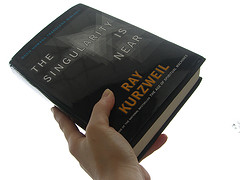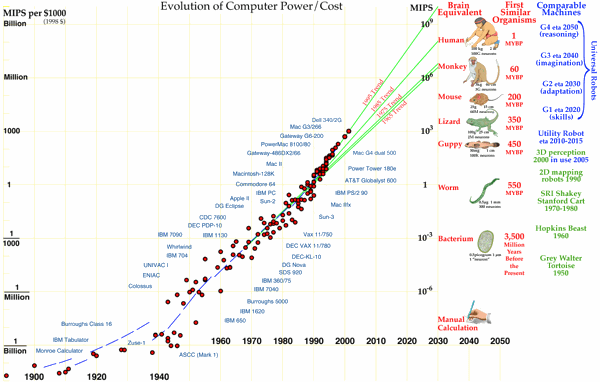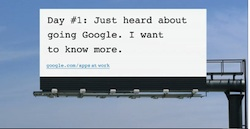
”The Singularity is Near’…very’
http://www.flickr.com/photos/36613169@N00/112475613
I am just finishing up a very interesting interview done by Leo Laporte Tom Merritt with Ray Kurzweil at TWIT Triangulation. While I know that some people feel that he is out there with his predictions and ideas, I was fascinated with his statements in the interview how humans look at change as linear when in many cases it is exponential due to our intuition being linear (time code: 3:40 – 6:20). The inability for humans to adapt to the exponential leads us to misinterpret most of the changes that are taking place today. I can remember a time when I was young where we had a party line phone that hung on the wall. We would interrupt our neighbors talking to find out when they thought they would be done. I took one of my first computer training classes in Hadley, Massachusetts around 1983 where I believe I used Windows 1.0 and struggled with understanding how to make the computer do much of anything. I knew there was something to this machine, but wondered if I could ever figure it out given how I was struggling to understand the input mechanism needed to make it do anything. Only 28 years later, I make my living teaching adults and students how to use technology to learn, create, communicate, teach, and share then I ever could have predicted in that classroom in Hadley. When I started teaching at Culbreth Middle School in 1993, I had the chance to use a Macintosh with HyperStudio. My teaching and my students learning changed as I began to use the technology in centers of learning allowing students to create projects that demonstrated what they were learning. It was not easy as we had floppy disks to manage, Appletalk networks to maintain, and those wonderful Imagewriter printers. This was exciting to me and altered my teaching career to become what I am today, a Digital Learning Coordinator where in the lab next door students are using Google Docs to collaborate and edit in real time. Students visiting from France are able to talk to their families back home in real time. We have used tools to teach from China with audio, video along with students recording spoken language in a VoiceThread while the teacher in China accessed it to listen in near real time. I could never have imagined this in 1983 or even 1993 and perhaps even 2003. Now, I can do it with nothing more then the tools built into the computers and a user account. Cost is $0.00.
As Ray discusses in the interview the advancements are predictable (time code:13:10 – 15:00) in that there is a steady progression in the advancement of technology. He talks about how we are moving towards creating computers that will allow nano-molecular computing. He said that when it happens he will have his “cell-phone” implanted in his body, as “that is where it belongs”. In addition, when asked about what the “Singularity” is he describes it as the time when computer intelligence reaches parity with human intelligence. This means that computers will be able to recognize patterns like our neocortex does for us. (time code: 21:12). I also liked the way Ray describes how 50 years ago we could not of told people that one day they will be able to use Skype, Facebook and other technologies to communicate. (time code: 25:00)
It is now 2011, and if Ray is correct, in only 18 years, the intelligence of a computer will be equal to the intelligence of our human brain. My grandson, Elliot, who is now 10 weeks old will be 18 at this time. What will his school look like then? What technologies will he employ in school? What will he use outside of school? What technologies will be banned or considered disruptive?
If schools follow the path we have thus far, schools will look and function much the same as they do today with some schools embracing the new technology more rapidly then other schools. Yes, we now have phones in the classrooms, although that was controversial when first suggested. Teachers have laptops, although most did not want them when first asked. Classrooms now have mounted LCD projectors with some even having SMARTBoards. If we go back further, I am relatively sure there were committees that were formed to discuss whether or not schools should deploy the new fountain pen when that technology was introduced. I can only imagine the discussions that took place at my high school in 1973 when the new IBM Selectric was ordered as it replaced the nice old fashion Manual typewriter.
How will learning change? How will teaching and schools change as we approach this singularity event? How will schools prepare for the event or will they? What role will schools play in this event horizon?
Anyway, listen to this interview as even though it may wierd you out, think about my grandson coming of age at that time and realize we must prepare for the singularity in some way as the change is coming in exponential ways.

http://www.frc.ri.cmu.edu/~hpm/talks/revo.slides/power.aug.curve/power.aug.gif
Updated: 4/21/2011 – I just read about this on Cathy Davidson’s blog and thought I could include it here as it relates.



